Mercedes EQA VS Hyundai Inster – Specs, Efficiency & Price Comparison
Find out now which car fits your needs better!
The Mercedes EQA (SUV) is powered by a Electric engine and comes with a Automatic transmission. In comparison, the Hyundai Inster (SUV) features a Electric engine and a Automatic gearbox.
When it comes to boot capacity, the Mercedes EQA offers 340 L, while the Hyundai Inster provides 280 L – depending on what matters most to you. If you’re looking for more power, you’ll need to decide whether the 292 HP of the Mercedes EQA or the 115 HP of the Hyundai Inster suits your needs better.
There are also differences in efficiency: 14.40 kWh vs 14.30 kWh. In terms of price, the Mercedes EQA starts at 44200 £, while the Hyundai Inster is available from 20500 £.
Compare all the key specs now and find out which model fits your lifestyle best!
Mercedes EQA
The Mercedes-Benz EQA presents a refined blend of elegance and electric performance, perfectly suited for urban environments. Its sleek and modern design emphasises aerodynamic efficiency while providing a sumptuous interior that epitomises luxury and comfort. With advanced technology seamlessly integrated into its user-friendly interface, the EQA ensures a connected and enjoyable driving experience.
details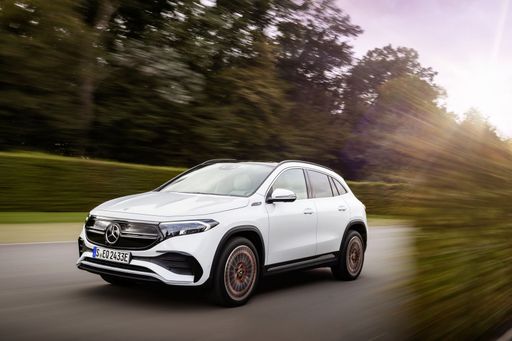 @ group-media.mercedes-benz.com
@ group-media.mercedes-benz.com
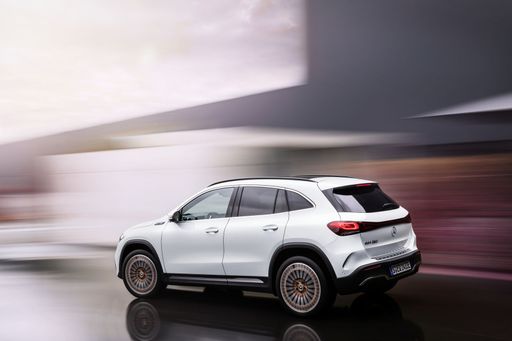 @ group-media.mercedes-benz.com
@ group-media.mercedes-benz.com
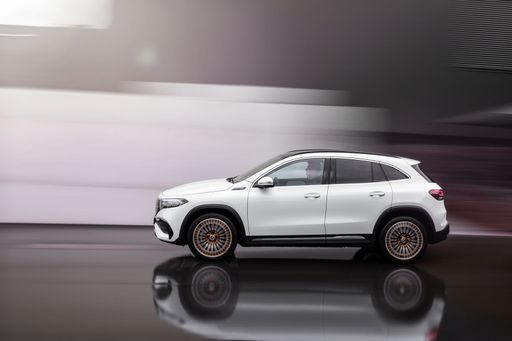 @ group-media.mercedes-benz.com
@ group-media.mercedes-benz.com
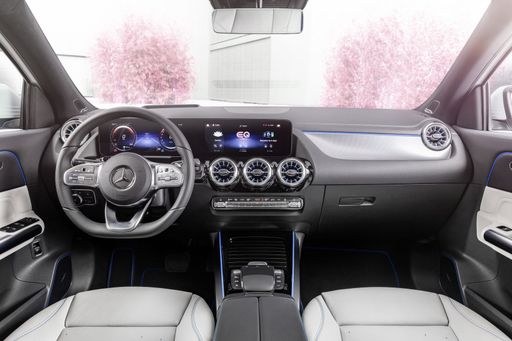 @ group-media.mercedes-benz.com
@ group-media.mercedes-benz.com
Hyundai Inster
The Inster has quickly captured the attention of automotive enthusiasts with its striking design and dynamic performance. This model seamlessly blends advanced technology with comfort, making it an ideal choice for both daily commutes and adventurous road trips. With its spacious interior and innovative features, the Inster promises an exhilarating driving experience that doesn’t compromise on practicality.
details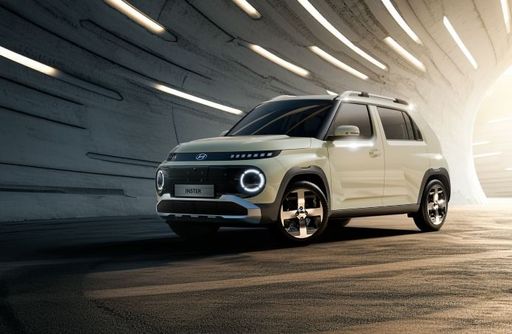 @ hyundai.news
@ hyundai.news
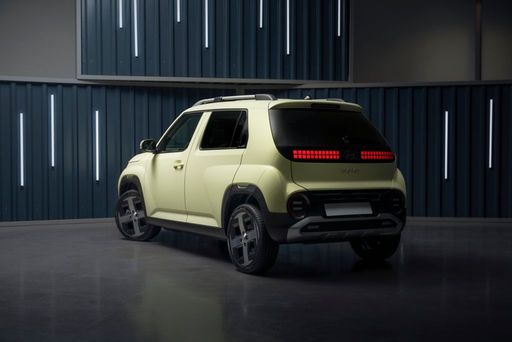 @ hyundai.news
@ hyundai.news
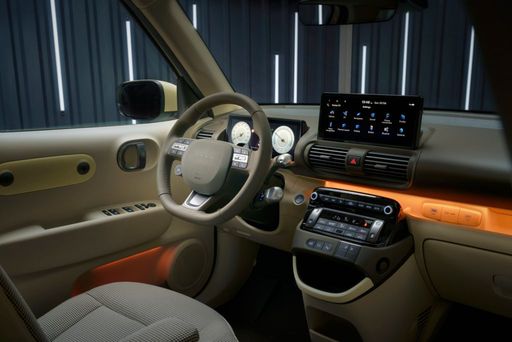 @ hyundai.news
@ hyundai.news

|

|
|
|
|
Costs and Consumption |
|
|---|---|
|
Price
44200 - 57400 £
|
Price
20500 - 25800 £
|
|
Consumption L/100km
-
|
Consumption L/100km
-
|
|
Consumption kWh/100km
14.4 - 16.9 kWh
|
Consumption kWh/100km
14.3 - 15.1 kWh
|
|
Electric Range
476 - 561 km
|
Electric Range
327 - 370 km
|
|
Battery Capacity
70.50 kWh
|
Battery Capacity
42 - 49 kWh
|
|
co2
0 g/km
|
co2
0 g/km
|
|
Fuel tank capacity
-
|
Fuel tank capacity
-
|
Dimensions and Body |
|
|---|---|
|
Body Type
SUV
|
Body Type
SUV
|
|
Seats
5
|
Seats
4
|
|
Doors
5
|
Doors
5
|
|
Curb weight
2045 - 2115 kg
|
Curb weight
1380 - 1433 kg
|
|
Trunk capacity
340 L
|
Trunk capacity
238 - 280 L
|
|
Length
4463 mm
|
Length
3825 - 3845 mm
|
|
Width
1834 mm
|
Width
1610 mm
|
|
Height
1608 - 1613 mm
|
Height
1575 - 1610 mm
|
|
Payload
425 kg
|
Payload
317 - 357 kg
|
Engine and Performance |
|
|---|---|
|
Engine Type
Electric
|
Engine Type
Electric
|
|
Transmission
Automatic
|
Transmission
Automatic
|
|
Transmission Detail
-
|
Transmission Detail
-
|
|
Drive Type
Front-Wheel Drive, All-Wheel Drive
|
Drive Type
Front-Wheel Drive
|
|
Power HP
190 - 292 HP
|
Power HP
97 - 115 HP
|
|
Acceleration 0-100km/h
6 - 8.6 s
|
Acceleration 0-100km/h
10.6 - 11.7 s
|
|
Max Speed
160 km/h
|
Max Speed
140 - 150 km/h
|
|
Torque
385 - 520 Nm
|
Torque
147 Nm
|
|
Number of Cylinders
-
|
Number of Cylinders
-
|
|
Power kW
140 - 215 kW
|
Power kW
71 - 85 kW
|
|
Engine capacity
-
|
Engine capacity
-
|
General |
|
|---|---|
|
Model Year
2024 - 2025
|
Model Year
2025
|
|
CO2 Efficiency Class
A
|
CO2 Efficiency Class
A
|
|
Brand
Mercedes-Benz
|
Brand
Hyundai
|
Mercedes EQA
An Introduction to the Mercedes-Benz EQA: A Glimpse of the Future
The Mercedes-Benz EQA stands at the forefront of automotive innovation, representing a harmonious blend of luxury, performance, and sustainability. As part of the prestigious EQ range, this all-electric SUV embodies the essence of modern electromobility. In this article, we delve into the technical sophistication and innovative features of the EQA that make it a standout choice in the electric vehicle market.
Under the Bonnet: Powertrain and Performance
The Mercedes-Benz EQA offers a versatile range of specifications to cater to various preferences and requirements. From the agile front-wheel-drive models to the more robust all-wheel-drive versions, the EQA provides a wide spectrum of power outputs ranging between 190 PS and 292 PS. This impressive power comes alongside an efficient energy consumption of 14.4 to 16.9 kWh/100km, offering an electric range of up to 561 km, making it suitable for both city commutes and longer journeys.
Intelligent Design and Efficiency
Designed to achieve optimal aerodynamics, the EQA's exterior combines elegance with efficiency. Its streamlined dimensions feature a length of 4,463 mm, a width of 1,834 mm, and a height ranging from 1,608 to 1,613 mm. The adaptive use of materials ensures a competitive gross weight of 2,045 to 2,115 kg while maintaining a remarkable 0 g/km CO2 emission, indicative of its commitment to sustainable driving.
Interior Comfort and Technological Innovation
Inside, the EQA is designed to offer maximum comfort and state-of-the-art technology. It accommodates up to five passengers with ample room and a boot capacity of 340 litres. The advanced MBUX (Mercedes-Benz User Experience) system is at the heart of the cabin, enabling intuitive interaction through voice or touch controls, ensuring that every journey is as convenient as it is connected.
Safety and Driving Assistance
Safety is paramount in the EQA, with an array of driver assistance systems to enhance security on the road. From adaptive cruise control to active lane-keeping assist, the EQA's suite of safety features ensures a secure and confident driving experience. These systems are integrated seamlessly, offering peace of mind without compromising on the joy of driving electric.
Cost and Value Proposition
With starting prices ranging from €50,777 to €66,961, the EQA positions itself as a cost-effective luxury electric SUV. The investment is further justified by its minimal running costs, with monthly expenses between €1,179 and €1,496 and a cost per km between 47.2 and 59.9 cents. This competitive pricing is complemented by its maintenance savings, making it a prudent choice for those making the transition to electric mobility.
Conclusion: A New Era of Electric Luxury
The Mercedes-Benz EQA exemplifies a fusion of luxury, sustainability, and cutting-edge technology. Its impressive range, intelligent design, and advanced features embody the future of electric vehicles. Whether you seek efficiency, style, or state-of-the-art innovation, the Mercedes-Benz EQA offers all this and more, marking a significant milestone in the evolution of electric driving.
Hyundai Inster
The automotive landscape continues to evolve, and at the forefront of this transformation is the Hyundai Inster, a dynamic model set to impress electric vehicle enthusiasts. As a compact SUV, the Inster embodies a blend of innovative technology, user-friendly features, and an eco-conscious design, making it a contender in the burgeoning electric vehicle market.
Powertrain and Performance
The Hyundai Inster is powered by an efficient electric drivetrain, offering two main battery options: a 42 kWh and a 49 kWh version. These options translate to power outputs of 97 HP and 115 HP, respectively, allowing drivers to choose based on their performance needs. The Inster accelerates from 0 to 100 km/h in 11.7 seconds for the 42 kWh variant, while the more powerful 49 kWh model reaches the same speed in an impressive 10.6 seconds, showcasing Hyundai's commitment to delivering engaging performance.
Range and Efficiency
One of the standout features of the Inster is its electric range. The 42 kWh model provides a range of 327 km, while the 49 kWh variants extend the range to 360 km and 370 km. This remarkable efficiency is complemented by consumption figures of 14.3 kWh/100 km for the 42 kWh variant and 14.9 kWh/100 km for the 49 kWh options. These figures ensure that the Inster is not only suited for city driving but also capable of handling longer journeys with ease.
Dynamic Design and Comfortable Interior
Aesthetically, the Hyundai Inster boasts a sleek and modern look, featuring a compact SUV profile that is both sporty and practical. The dimensions, measuring between 3825 mm and 3845 mm in length, with a width of 1610 mm and heights ranging from 1575 mm to 1610 mm, contribute to its spacious and comfortable cabin. The interior accommodates up to four passengers, making it an ideal choice for small families or couples.
Innovative Features
The Inster incorporates advanced technology geared towards enhancing the driving experience. Its automatic transmission, utilizing a reduction gearbox, ensures seamless gear shifts. Additionally, drivers will appreciate the array of smart features designed for convenience and connectivity, including advanced infotainment systems and driver assistance technologies.
Sustainability Credentials
Hyundai is dedicated to sustainability, and the Inster is a testament to this philosophy. With a carbon footprint of zero emissions, the Inster falls into the A CO2 efficiency class, making it a responsible choice for eco-conscious consumers. The absence of traditional emissions positions the Inster not only as an economical option but also as a proactive step towards reducing our environmental impact.
Conclusion
The Hyundai Inster stands out as a versatile and innovative solution in the electric vehicle segment. With a balanced approach to performance, efficiency, and sustainability, it caters to the modern driver’s needs and reflects the automotive industry's shift towards electrification. The future looks bright for the Inster, as Hyundai continues to pave the way for greener driving experiences.
The prices and data displayed are estimates based on German list prices and may vary by country. This information is not legally binding.
